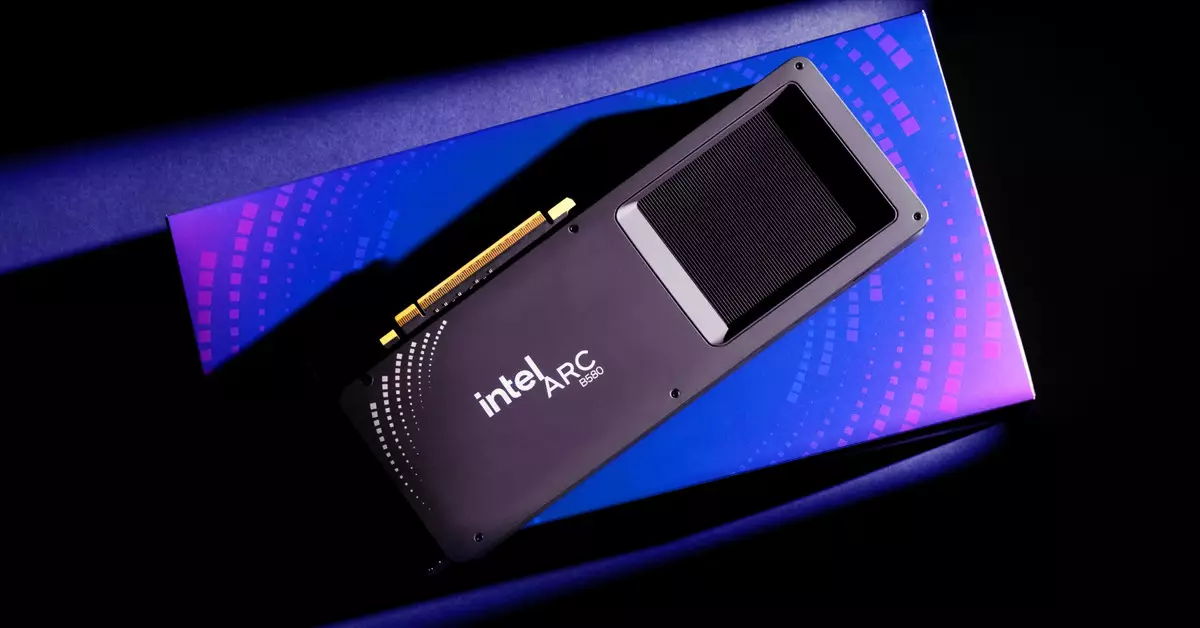After a series of challenges and setbacks in the competitive graphics processing unit (GPU) market, Intel’s recent launch of the Arc B580 “Battlemage” GPU signifies a significant turnaround. For a company that has struggled to secure its footing in a landscape dominated by powerhouses like AMD and NVIDIA, the B580 presents an exciting opportunity to capture both consumer attention and market share. Priced at $250, this new entrant has received an overwhelming positive response, reflecting a potential shift in Intel’s future in gaming technology.
Consumer Reception: A Market That Craves Change
The Arc B580 has quickly garnered acclaim, having sold out rapidly at various retail locations shortly after its release. Intel’s spokesperson Mark Anthony Ramirez indicated that there is a high demand for the B580, with plans for continuous weekly replenishments to meet consumer needs. Reviews have been largely favorable, with headlines praising its affordability and performance relative to its competitors, particularly considering the recent history of inflated GPU prices that have left many gamers frustrated.
What sets the B580 apart is not just its price point but also its specifications. With a generous 12GB of video RAM, it appeals to gamers and creators alike, providing ample memory for demanding applications. Early feedback indicates that while it may not outperform the RTX 4060 or AMD RX 7600 in every gaming scenario—particularly for those still gaming at 1080p—it often exceeds expectations in many titles, offering a compelling alternative in a market that has lacked affordable options.
Intel’s success with the B580 is particularly notable given the underwhelming performance of its competitors’ recent offerings. The RTX 4060 has been criticized for failing to meet consumer expectations, with some reviewers labeling it as a “wet fart of a GPU.” In stark contrast, the B580 has been celebrated as both “great” and “affordable,” positioning itself as a viable option for gamers seeking to maximize their performance-to-cost ratio. This is an important shift in the market, where consumers have long endured exorbitant pricing without gaining proportionate performance upgrades.
Despite the B580’s promising debut, the competitive landscape remains intensely dynamic. With AMD and NVIDIA expected to launch new GPUs imminently, the pressure is on Intel to maintain its momentum. The B580 stands as a testament to what can be achieved when a major player in the tech industry is willing to innovate and listen to consumer feedback, positioning it well against its seasoned competitors.
Supply Chain and Availability: Challenges Ahead
While the initial launch of the B580 has been met with enthusiasm, the issue of availability remains a pressing concern. As supply chains continue to grapple with post-pandemic challenges, consumers may find it difficult to acquire the card at its advertised price. The term “paper launch” has often been associated with new technologies when a company rolls out limited quantities to create buzz without meeting substantial demand; however, initial reports suggest that Intel aims to avoid this pitfall.
Retailers like Newegg and B&H are anticipating restocks for the B580, but as of now, many consumers may be forced to look at third-party sellers or higher-priced variants being offered. As a consequence, the perception of value may shift if the product cannot be readily obtained at its original pricing.
The introduction of the Arc B580 marks a pivotal moment in Intel’s journey into the GPU market. If the company can sustain this level of interest and address supply issues effectively, it may be able to carve out a substantial niche in the gaming landscape. This success could pave the way for future innovations and expansions in their product line.
Ultimately, the B580 has ignited a spark of hope for consumers and gamers looking for a reliable and affordable option in graphics technology. Whether this card can sustain its early success amidst the looming presence of AMD and NVIDIA’s impending releases remains to be seen, but it undeniably stands as a testament to Intel’s potential in revitalizing its standing in the GPU market.

